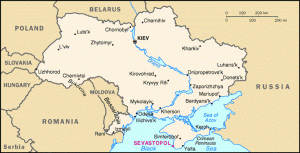Students know of the widespread devastation that resulted from WWII, but most history lessons stop just short of how those countries, cities and towns picked up the pieces and rebuilt their homes. As this reading shows, it wasn’t an easy task. Sevastopol needed to be completely rebuilt–and not just the buildings, but social services as well. Infrastructure was close to nonexistent, public health services were failing the population and all the while, architects and city planners were attempting to “russify” the Ukrainian city with a city-wide face lift in the Russian style.
In typical Soviet Union fashion, the state wanted Sevastopol to be rebuilt in the Russian image. As Professor Qualls wrote in his article, “the perceived reversion to tradition meant a Russian ethnic identification wrapped in a Greek architectural façade, yet devoid of all hints of competing identifications.” When I read this, I was completely unfazed. Why of course the government would use this opportunity to impose Russian culture on Sevastopol. It would be logical for the people of Sevastopol to want to rebuild their own heritage, commemorate their losses in their own fashion and construct a city of their own choosing–but this wasn’t an option under Soviet rule.
It was this “top-down” approach to reconstruction that most caught my attention in the article, but the health and safety conditions plaguing the city were of great importance as well. It took several years before disease began to decline, living conditions (such as apartments with adequate space so as not to spread disease) improved, health services (such as ambulances) were restored and the population began to rebound. Of course, the important thing is that the city did achieve this stability, but I’m sure that if compared to the reconstruction timelines of Western European nations, the case of Sevastopol look quite bad.





